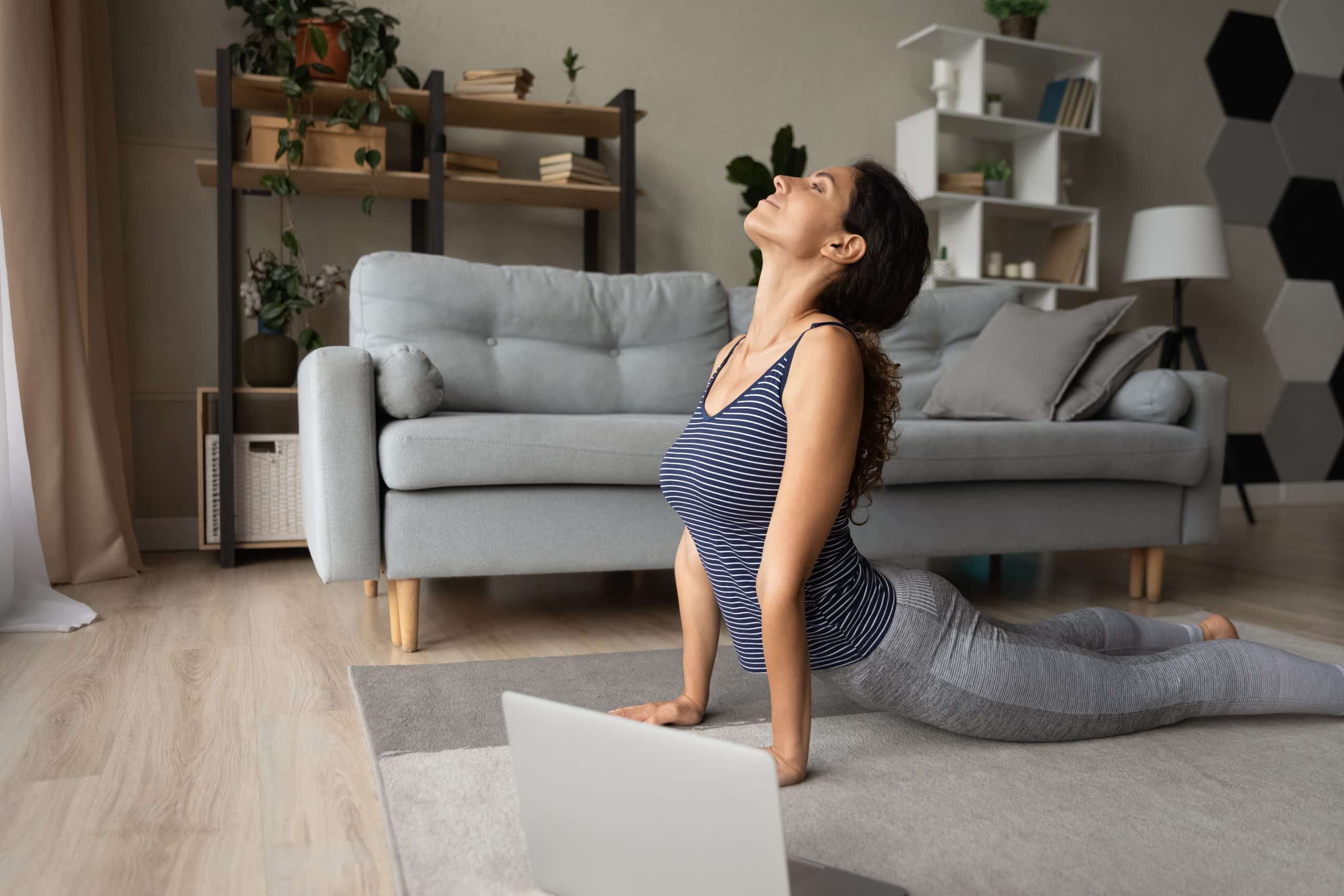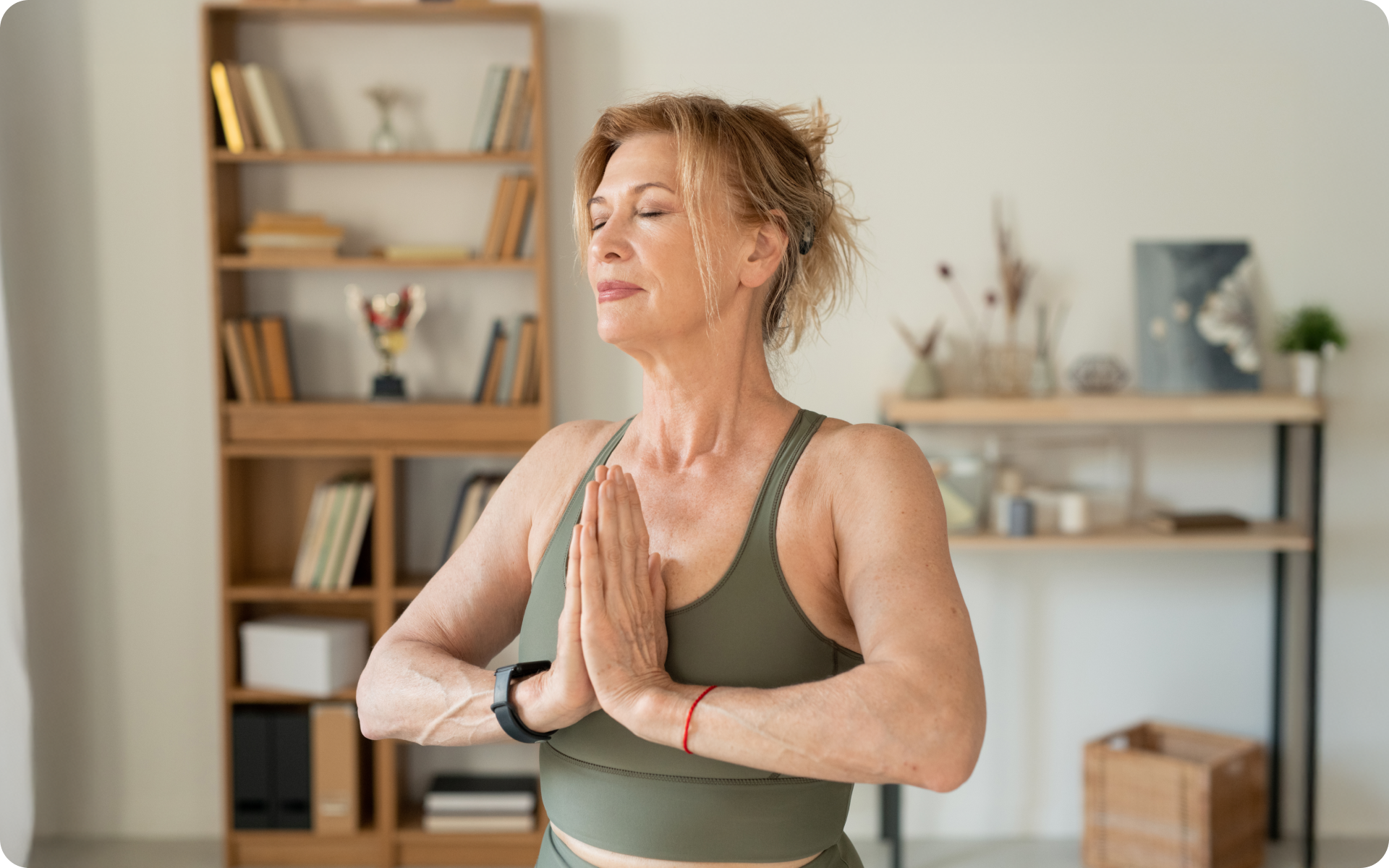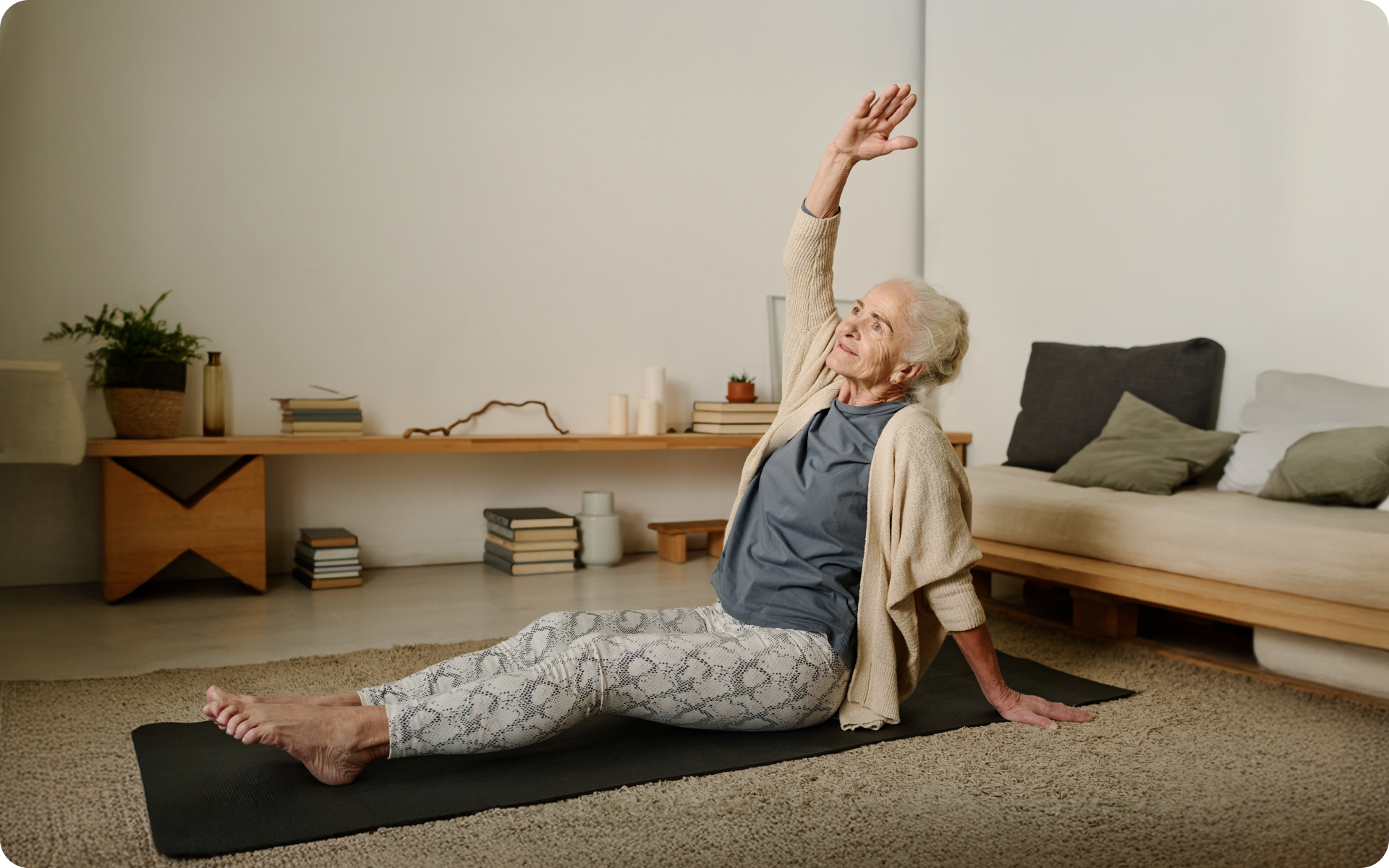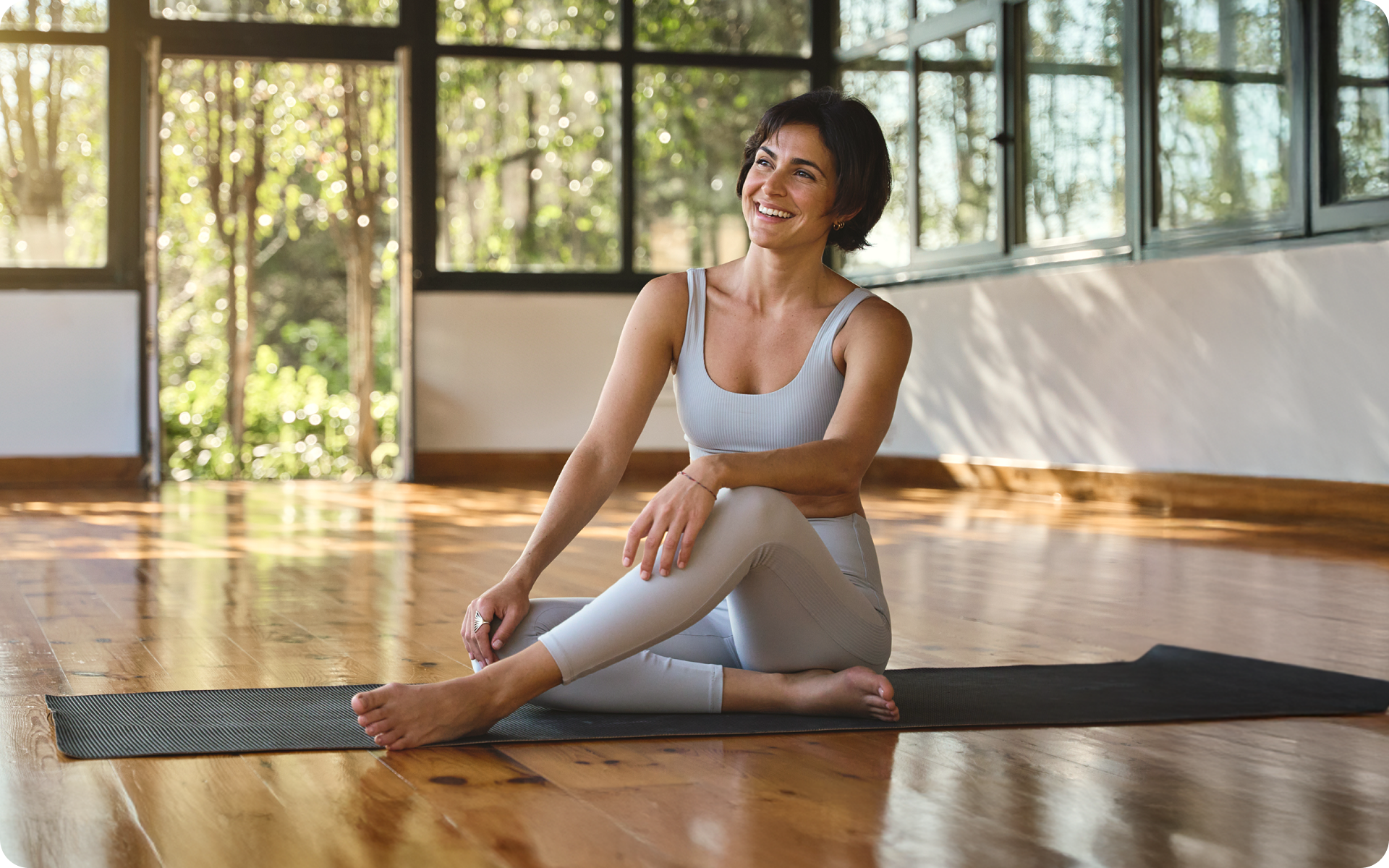Did it ever happen to you? You couldn’t shut your eyes at night and instead of falling asleep at 11 PM, you laid there until finally at 1 AM you dozed off.
Perhaps you started your bodyweight exercises at home and then realized you’re not as flexible as you thought. What about when the neighbor’s dog keeps barking all day long, not letting you focus on your freelance job from home.
Or maybe you responded to stress with more aggression than you expected and now it feels like you’re out of control.
We, human beings, go through so much stuff daily. This is a part of our lives. Sometimes you just want to let your hair down and allow it to flow naturally. Reality often works the other way around though, you need to pour some effort into balancing your emotional health and making your body more flexible and mobile.
This is your lucky day, as there is one thing in this life that could help you with your overall physical and emotional wellness. We’re talking about Yin yoga. Being a slow practice, yin yoga benefits all levels, both for beginners and the advanced.
You need to implement yin yoga sessions into your routine. Why? – you may ask. Well, in the following blogpost you’re going to unravel 5 crucial benefits of yin yoga.
Believe me, after learning the benefits, you’ll put on your comfy garment, jump on the yoga mat, and gently immerse in the soothing but challenging poses at the same time.
Intense sweat sessions, working weight loss tips, lip-smacking recipes come in one package with the BetterMe app. And all of it is at your fingertips, start transforming your life now!
What does yin yoga do for your body?
There are both pros and cons of yin yoga but since this article applies to benefits, I’m going to focus on them only.
Before exploring the reasons why you need to start practicing yin yoga, I would love to begin with an explanation of the term.
Yin yoga is a specific type of yoga where instead of switching between poses after a few breaths, you hold onto each pose for longer (2). You’re allowing the less flexible deeper tissues in your body to stretch. For example, an individual holds one asana for 3 to 10 minutes, depending on their fitness or so-called “yoga” levels.
Yin Yoga is based on the traditional Chinese medicine concepts of yin and yang. In TCM the concept of Yin and Yang serves as the means for understanding health, diagnosing and treating illnesses.
Incorporating a mind-body connection is vital during yin yoga poses as you’ll be calming your mind and relaxing your body.
Now, as I promised, here are the 5 possible yin yoga benefits (2):
- You might become more flexible
- You may boost your circulation
- You might become less stressed and depressed
- You may develop breath awareness
- You might enhance your range of motion in joints and ligaments
You might become more flexible
No wonder yin yoga stretches deep connective tissues in your body along with the fascia. As you give the fascia time to relax and stretch through poses, you create space for everything else inside your body and the fascia. It increases your mobility and flexibility, reduces the sensation of stiffness, and enhances movement freedom.
You may boost your circulation
Yin yoga gets your blood flowing. By targeting your deep tissues and ligaments while breathing into each pose, you draw more oxygen into your muscles and body. This promotes blood circulation in your joints (4). This boosts proper circulation, you keep your heart work more stable, your brain sharp, and you’re able to heal wounds faster.
You might become less stressed
I assume this is one of the top reasons why some individuals engage in yoga classes. Stressful situations mess with our minds all the time. A 2021 study showed that after six weeks of yin yoga, the participants experienced significantly less anxiety and an increased sense of mindfulness.
You may develop breath awareness
Yin yoga techniques teach you how to control your breathing and use your lungs fully. Long-held yoga poses, such as those practiced in yin yoga, will allow you to take time to connect with your breath. There is a separate term called “yogic breathing” which describes intentional controlled breathing during yoga poses (3).
You might enhance your range of motion in joints and ligaments
Holding poses longer is not easy but this is what makes yin yoga so special and advantageous for your joints and ligaments. Yet, the length of time you hold depends on your flexibility and sensations. In Yin Yoga, you don’t hold a maximum stretch, especially when you’re a beginner. You’re allowing deeper stretches gradually and gently. This enhances the range of motion in your joints and ligaments. Besides, there are certain poses designed to promote the joint health (5).
Read more: Yoga for Moms Who Need a Break: A Simple Guide
What is the intention of yin yoga?
Among all the intentions of yin yoga, there are two primary goals. The first one applies to gently stimulating fascia and connective tissues in your body encouraging vitality, hydration, and repair of these tissues.
The second intention is to evoke a connection between your body and mind which leads to an overall feeling of balance and joy.
The mixture of these two helps you maintain a healthier and more flexible physique along with good emotional regulation. Both of them are vital for your overall wellness.
Sure, yin yoga is not perfect for everyone. Some individuals still desire to start from milder versions.
Sofa yoga is another vital way to relax and test, but only on the cozy couch. Check out the 13 Sofa Yoga Benefits to motivate yourself to engage in “soft” yoga sessions.
What happens if you do yin yoga every day?
Here’s what happens, you get more flexible and ready to perform more challenging workouts. Your blood circulation boosts, therefore, your heart health improves. Your breath awareness along with mind-body connection evokes overall relaxation and balance.
You finally start sleeping better without turning from one side of the bed to another.
The benefits of yin yoga weight loss are connected with stress.
Note that when you’re stressed out your cortisol levels increase. Cortisol increases abdominal fat and reduces muscle mass. This causes you to crave fat and sugar-based food which ultimately leads to obesity (1).
Therefore, when you are less stressed, you control your food cravings better, your mood is lifted, and you sleep better. All these things positively impact your weight.
I’m not saying that yin yoga is the top solution for your weight loss goal but it may work on the underlying weight gain causes.
Lastly, yin yoga is safe enough to practice daily. My recommendation for you as a possible beginner to start yin yoga under the supervision of the yoga instructor.
Despite being calm and quiet, the yin yoga master will gently guide you through each session. Whether it’s Yoga for Moms or a more challenging yoga session, you should use the guidance of professional instructors. In this case, you’re more likely to obtain the aforementioned benefits faster.
Whether you’re looking to simply pep up your fitness routine, jazz up your diet with mouth-watering low-calorie recipes or want to get your act together and significantly drop that number on your scale – BetterMe app has got you covered! Improve your body and revamp your life with us!
What does yin yoga feel like?
At first glance, yin yoga may seem like a gentle and simple practice. However, as you hold onto each asana for an extended period of time you will understand that it’s a challenging activity, especially for beginning practitioners.
Despite being intense, it is important that yin yoga does not feel painful. Be aware that you might feel some slight discomfort as the poses are designed to target areas of tension, but you shouldn’t experience any pain. If you do, this could mean: :
- You are performing the asana improperly – seek guidance for your alignment in the posture
- You hold the pose longer than you should for your fitness level – if you are new to yoga begin with just 1-3 minutes for each pose
- You may need to adjust the depth or angle of the pose – in yin yoga you do not need to hold the posture at your maximum flexibility, it is more beneficial to reduce the stretch to a position you can hold comfortably.
Check out these essential yin yoga techniques and tips:
- Practice in slow motion. Hold each asana for an adequate amount of time, at least one to two minutes. If anything feels uncomfortable, change the depth or angle of the pose, or take care to slowly move out of the position entirely.
- Focus on your body without observing others. Stop comparing yourself to other yoga practitioners. Even though your bodies look similar from the outside, every skeleton is different. Don’t exasperate yourself with too long or challenging postures, choose what’s best for you.
- Strive for comfort. Yin yoga’s aim has nothing to do with achieving the perfection of each pose. The dangers of yin yoga start as you impose too much intensity on your body. Relax and enjoy the process instead.
Is Yin Yoga for everyone?
While yin yoga is safe and beneficial for most people, there are a few exceptions. Some people with osteoporosis should avoid practicing certain yin yoga poses, especially those that require extreme flexing or extending of the spine.
Additionally, Women in their third trimester of pregnancy or those who have given birth to a child should also avoid yin yoga. During pregnancy, the body releases relaxin which increases joint flexibility which may lead to overstretching and injury during yin yoga.
Read more: Somatic Yoga: A Journey to Self Discovery
FAQs
How many days a week should you do yin yoga?
It’s entirely up to you. In general, you can do yin yoga every day as it’s a relaxing activity that doesn’t impose big intensity on your joints. Nonetheless, you should listen to your body and give it a rest when it needs it. Some practitioners prefer doing yin yoga sessions 3-4 times a week, which allows them to reap the benefits and rest.
How many times a week can you do yin yoga?
The number of times you can engage in yin yoga sessions depends on your fitness levels, your body needs, and your ability to spare time. 2-3 times a week is totally enough for your yin yoga as well as daily practices.
Can you practice too much yin yoga?
Yes, it’s possible to overdo yin yoga, like any other sportive activity. This especially applies to individuals who practice yin yoga without the direction of the professional instructor. You may overstretch, hold the pose for too long, or simply lack the proper technique and form.
The Bottom Line
Congratulations, you have explored the 5 crucial benefits of yin yoga and now are ready to dive into the relaxing poses at your home or yoga studio.
By practicing yin yoga you get a more flexible and mobile body, as well as boost your blood circulation. Additionally, you develop breathing awareness through deep and focused breathing techniques. Also, you enhance your range of motion in joints and ligaments which is vital for your future athletic performances. Lastly, you become less stressed and more balanced which positively affects your body weight.
Yin yoga feels more intense than yang style as you’ll be holding each pose longer. That said, you shouldn’t feel any pain during poses, and adjust the angle or gently move away from the pose in case you do.
It is recommended to begin your yin yoga practice under the supervision of a licensed yoga instructor. They will shed light on the proper techniques and help you achieve the desired results of each asana. Pregnant women or those who have recently given birth as well as some people with osteoporosis should avoid practicing yin yoga.
DISCLAIMER:
This article is intended for general informational purposes only and does not serve to address individual circumstances. It is not a substitute for professional advice or help and should not be relied on for making any kind of decision-making. Any action taken as a direct or indirect result of the information in this article is entirely at your own risk and is your sole responsibility.
BetterMe, its content staff, and its medical advisors accept no responsibility for inaccuracies, errors, misstatements, inconsistencies, or omissions and specifically disclaim any liability, loss or risk, personal, professional or otherwise, which may be incurred as a consequence, directly or indirectly, of the use and/or application of any content.
You should always seek the advice of your physician or other qualified health provider with any questions you may have regarding a medical condition or your specific situation. Never disregard professional medical advice or delay seeking it because of BetterMe content. If you suspect or think you may have a medical emergency, call your doctor.
SOURCES:
- Stress and Obesity: Are There More Susceptible Individuals? (2018, ncbi.nlm.nih.gov)
- What Is Yin Yoga? (2022, webmd.com)
- What is yogic breathing? Benefits and how to try it (2022, medicalnewstoday.com)
- Yin Yoga (2021, wellbeing.unsw.edu.au)
- Yoga Poses for Joint Health (tricitymed.org)










